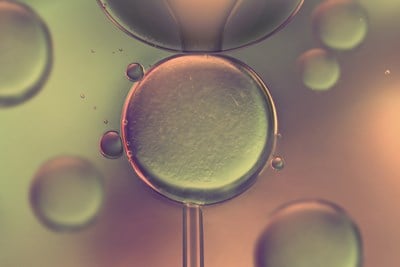The goal of artificial insemination is to help a sperm reach a woman’s egg with the hope of fertilization and pregnancy by placing the sperm directly into a woman’s reproductive tract. Here are all of the different types of artificial insemination that you can choose from.
Intrauterine Insemination (IUI)
This is the most common insemination procedure. Intrauterine insemination involves taking a sperm sample either from a woman’s partner or from a sperm donor and washing the sperm in a lab to separate it from the other parts of the semen. Then, the sperm is placed directly into the uterus. While slightly more expensive than other methods, IUI has the highest success rate.
Intrauterine insemination is often also combined with fertility drugs such as ovulation-inducing medications to further increase the likelihood of success. These drugs cause the ovaries to produce more eggs to make fertilization easier. The most common drug used for this purpose is Clomid (clomiphene citrate).
Intravaginal Insemination (IVI)
This type of insemination is also known as self-insemination because couples can try this method from the privacy of their own home. Using a syringe, the semen sample is inserted into the vaginal canal near the cervix. Though this is not nearly as effective as IUI, one big advantage to IVI is its low cost.
Intracervical Insemination (ICI)
Compared to the IUI procedure, intracervical insemination is much less expensive. Like intrauterine insemination, ICI is also a painless, non-invasive procedure. With it, the semen sample is placed directly into a woman’s cervix. Although it is not quite as a effective as IUI, because it is lower in cost, couples can afford more treatment cycles.
Intratubal Insemination (ITI)
There are two different types of intratubal insemination: intra-fallopian insemination (IFI) and intraperitoneal insemination (IPI). During ITI, washed sperm are injected into a fallopian tube or into the top of the vagina near the entrance to the fallopian tubes. These procedures are much more invasive with success rates that are not much higher than IUI, which is why ITI is a very rare method of artificial insemination. Usually an ultrasound is also need to guide the sperm where they need to go.
Artificial Insemination Results
With each of these procedures, timing is the key to success. All artificial insemination procedures are most successful if performed when a women is ovulating. This is the time in a woman’s menstrual cycle when she is most fertile because an egg has been released from the ovaries. In order to time the inseminations perfectly, blood and urine tests are usually used to check for levels of certain hormones that indicated ovulation.
If artificial insemination doesn’t work the first time, it is usually recommended that you and your partner attempt it at least three to six times before moving on to another more complicated method.



